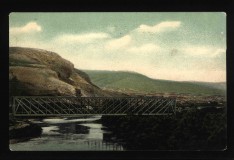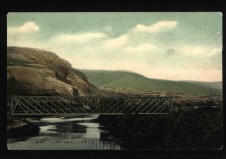Les Soviets Plus L’Électricité (Soviets Plus Electricity), by Nicolas Rey

Les soviets plus l’électricité
Nicolas Rey in person from France! Los Angeles premiere!
Nicolas Rey (b. 1968) wasn’t named after the famous American director (he’s the one that had a pseudonym) and he’s not even the son of the French experimental filmmaker Georges Rey. He’s been making films since 1993, productions hovering somewhere between photography, documentaries and experimental films. He spends most of his time at “L'Abominable”, a co-operative film lab he helped founding in 1995. He’s wrapping up a US tour in Los Angeles.
Other information and illustrations at http://nicorey.club.fr
Nicolas Rey will be doing a different show at REDCAT on Monday, December 9, at 8:30 pm. autrement, la Molussie (differently, Molussia)
http://www.redcat.org/event/nicolas-rey
This presentation of Les Soviets Plus L’Électricité is part of a touring exhibition of critically acclaimed French experimental filmmaker Nicolas Rey, with 10 other universities and media centers in the United States, supported in part by a grant from Cine2000, a program of FACE.
http://frenchculture.org/film-tv-and-new-media/grants-and-programs/cine2000
Special thanks to Steve Anker, Bérénice Reynaud, REDCAT and Cal Arts for making Nicolas Rey’s visit possible.

Les Soviets Plus L’Électricité
Les Soviets Plus l’Électricité (Soviets Plus Electricity)
(2001, 15mm, 175 min.)
A cinetrip to a defunct country
Super-self-production in Sviemacolor by Nicolas Rey
Three hours of 16mm public transportation.
Wandering through Russia as if through someone else's house.
Soviets Plus Electricity is a cinematic journey through Russia to Magadan, a city famous in Soviet times for being synonymous with deportation. Based on excerpts from his acoustic diary, documentary footage and some autobiographical insights given on the way, the roving reporter searches for imaginary roots and its historical and political implications. The film was shot in August and September 1999.
"Day two is the worst. It was the same in the train: on the second day, I stamped my feet impatiently. Then, from the third day on, it gets better. You get used to the slowness, to the monotonous landscape, to a life made up of short sleep-eat-wait cycles having absolutely nothing to do with the usual timing of a day." Advertisements for linoleum as if it were some precious stone, and entire cities - built on gold mines - left abandoned. There is no such thing as Russian chaos. Just "Europe" stretching all the way to the Pacific Ocean, and no longer merely to the ghostly Oural Mountains.
FIPRESCI Prize Berlin 2002 – Musée National d’Art Moderne film collection.
